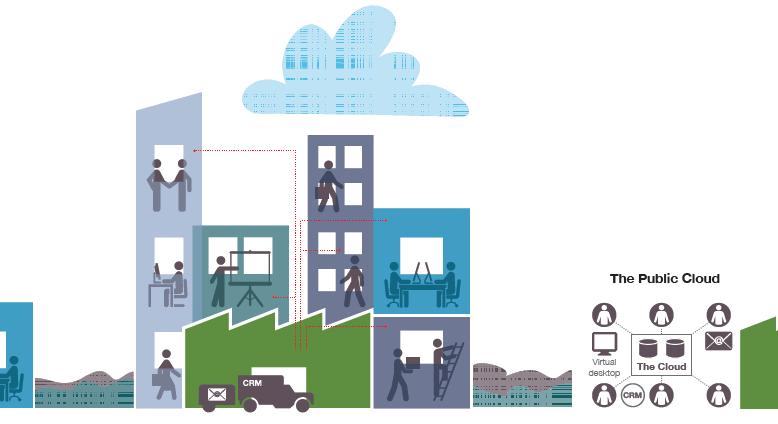The Advantages Of A Public Cloud Computing

I’ve been following cloud computing for some time and every day I see that it is accelerating the ripening process and trying to understand its concept and technologies. Today it is clear that, in its various forms, cloud computing has the potential to significantly change the way IT operates, and manages and allocates its budget, and pays for its use by users. Of course it is a change that does not happen abruptly, but gradually.
Public clouds, for example, while still generating fears of security and privacy, which are in my opinion, largely unfounded, no doubt put pressure on the structure of IT. Why keep a set of dedicated servers often idle, and a staff dedicated to operations that do not add value to upgrades of operating system releases if I can transfer this activity to a trusted provider?
Moreover, when analyzing the portfolio of applications in a company, we found that most of them are not strategic or critical to profile data that is not sensitive in terms of security. And we also observed that most of these applications could operate in an environment of less than 95% availability. However, these applications can be moved to public clouds without any major scares. In fact, a public cloud can offer a level of security and availability much higher than that offered in many of today’s data centers to small and medium enterprises.
The topic cloud also begins to permeate discussions of strategic companies. In a meeting with business executives and the CIO of a large company it became clear that they were already considering that a significant portion of its future computing power would be served by public clouds, with a consequent impact on the IT budget, which will shift the costs of “Capital Expenditure” to “operational Expenditure”.
On the other hand, the concern of disintermediation by IT users in many areas also appeared at the meeting, as they begin to look for other solutions, cloud, SaaS, without even interacting with the CIO. This is a challenge that IT has to face because uncontrolled spread of a cloud for the organization can create problems of integration, lack of adherence to security policies and increase the risk of audit to identify issues of governance.
The CIO has to play a proactive role in the process of adoption of cloud. Indeed, the question is not whether or not to adopt cloud, but what is the pace of adoption. The first step is to identify which applications exist, which may at first go to public cloud and / or private and create a catalog of services and applications that will be available in the clouds.
For example, the CIO can begin reviewing applications available today under two points of view, a level of criticality and the other how they are strategic to the business. Most applications will be below of the critical level and can be transferred to public clouds.
The pressure for cost reduction is constant and note that it is increasing every year. At the same time the complexity of the business environment demands faster responses and increasingly complex IT solutions. Seems an equation without answers, but if we analyze the potential of cloud, we can immediately identify:
1) Move non-critical (and not strategic) applications and not strategic to public clouds,
2) Implement private clouds for certain controlled environments such as development and testing, increasing the cycle
3) Create service catalogs that allow the user to operate in self-service, with minimal interference from IT.
These actions help to better understand what is cloud and its potential while allowing the organization to adjust and refine their governance processes, already contemplating cloud computing. It also helps to more accurately implement charge back processes that are indispensable when it comes to cloud computing.
Services to create a catalog that includes internal and external applications (SaaS), similar to an Apple AppStore is an innovative and highly efficient way of providing services to users. The IT department can and should define the rules of the game: Which applications can enter the catalog? The IT department should establish an approval process that can evaluate cloud providers and SaaS applications available. Thus, IT does not become a bottleneck and at the same time clearly shows that it is actively driving the process of “cloudification” in company.
The important thing is that, IT understands that its role does not disappear with the cloud computing model. It remains responsible for providing the best services in the lowest possible cost.
Cloud services changes the context: IT is no longer the only provider of the service and should leave this monopoly role and assume a new role. So sometimes the best solution is built, developed and operated by IT and other best alternative is to operate in a public cloud. IT should be at the center of these decisions and for that, the mindset must be changed.
- How Cloud Computing Is Changing The Labor Market - March 25, 2015
- Adopting Infrastructure as a Service Can be a Good Deal - March 17, 2015
- Will Virtualize? Take These Six Points Into Consideration - March 12, 2015